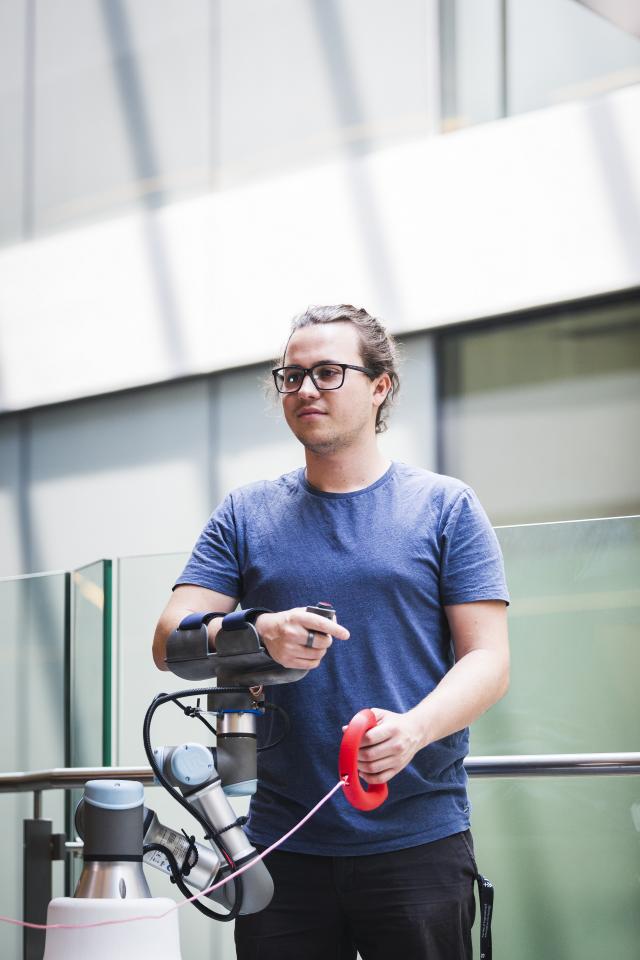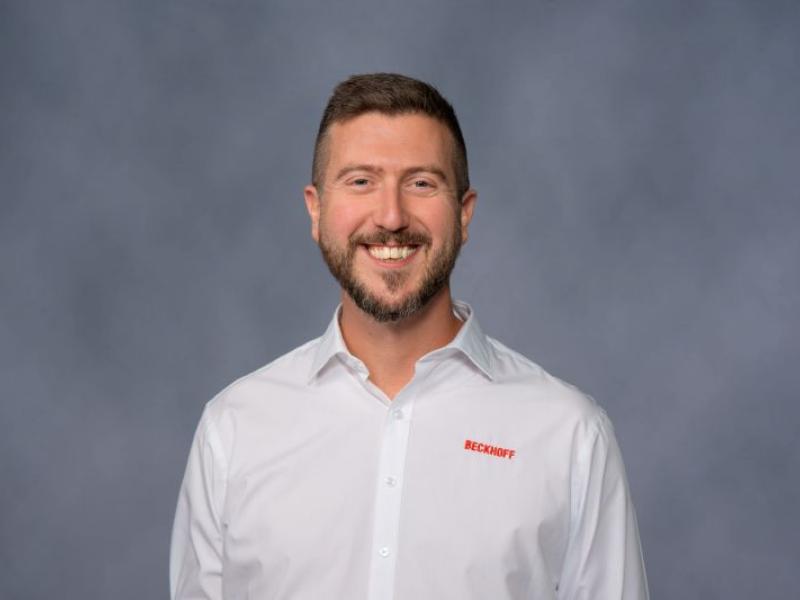Bridging the gap - a game changer in upper limb therapy
Rowan Smith is the CEO of Tech Gym, a University of Technology Sydney (UTS) start-up. With a bachelor’s degree in Mechanical and Mechatronics, Smith recognised a need to provide easier access to physical therapy through technology.
In 2017, Smith’s grandma, Lorna suffered a stroke which left her in need of intensive regular physiotherapy to help reconnect her brain to her body.
“Having her independence back was so important to my nan. The therapy that one needs to undergo is physically intense – both for patients and therapists,” he explains.
“The patient usually has little to no physical independence and often family members are called in to assist due to staff shortages. Here, family members will assist in conducting therapy or holding their family member in the correct position to undergo therapy,” Smith explains.
Adding to both staff and patient woes is the monotony of therapy. “It’s repetitive and offers no intellectual engagement. For example, a patient could sit trying to fasten and loosen a button for up to an hour”.
Access to Therapy is a Global Issue
Globally, the World Health Organisation (WHO) reports that an estimated 2.4 billion people are currently living with a health condition that benefits from rehabilitation.
In Australia there are approximately half a million people living with the effects of a stroke and it is set to surge to 1 million people by 2050. Furthermore, there are only 65 000 physio and occupational therapists on-hand to assist with every type of injury for both children and adults.
“This is where Tech Gym comes in. I studied engineering to make a difference and soon realised that I could play a key role in addressing this fundamental issue” says Rowan.
Robotics and Rehabilitation
“I signed up for a robotic rehabilitation course at UTS in the summer of 2018,” says Smith. “At this stage, UTS had received four UR3 collaborative robots (cobots) from Universal Robots. We spent six weeks exploring their capabilities and developing a prototype”.
He adds that Tech Gym incorporated intelligent programming courtesy of Universal Robots’ software tools, which were easy to use and quick to deploy.
Says Smith: “During the product development phase, we worked closely with a team of physio, clinical and occupational therapists. Astoundingly, the B1 prototype did all the rehabilitation work. “It holds and moves the patient’s arm around in a cast while the patient is passive”.
Soon thereafter, Tech Gym developed an upgraded model by adding sensors. In this way cobots can be set up in-line with where the patient is in their rehabilitation journey. For instance, if a patient requires more resistance in the various movements, this can be achieved.
More recently, an intuitive cast was developed. “If the patient can complete a small range motion, then the cast enables them to reach a further frame of motion. This continues to advance, both in movement and the quality of movement, throughout the journey to recovery”.
Safe Collaboration Between Cobots and Humans
According to James McKew, Regional Director of Universal Robots Asia-Pacific, the repetitive nature of these movements aligns closely to cobots’ skill sets. “They focus on repetitive tasks and can work safely alongside humans. In addition, they address labour shortages and remove some of the physical strain from therapists. This is the sweet spot for collaborative robots”.
According to Smith patients who took part in the initial trials showed little concern regarding safety, even amongst the elderly. The ‘gentle nature’ of UR3 cobots ensures that they can collaborate safely and effectively with humans, while their blue and silver aesthetics blends in well in a clinical environment.
Freedom of movement
The degree of freedom of movement combined with the fact that you can move it into unique positions allows cobots to easily mimic human movements.
Beyond the physical capabilities, Smith believes that Tech Gym truly instils confidence in patients. From mundane to stimulating, he adds that the therapy is completed through gamification aimed at adults. “Programmes include a range of everyday tasks such as cooking, cleaning, and driving”.
Smith notes the flexibility of Tech Gym’s design, saying that the units are mobile and can be wheeled from one patient to another. “In addition, staff can be easily trained on how to use Tech Gym in a matter of minutes”.
Moving forward
“One of the biggest challenges is the adoption of such technologies,” Smith adds, “Getting the medical facility to embrace Tech Gym as a worthy alternative is not without its challenges”.
Nonetheless, Tech Gym has received their clinical trial after two years of R&D and their prototype is now ready to be trialled at South West Sydney Hospital. “These tests will establish the feasibility of robotics in treating stroke patients” explains Smith.
The ROI of this project is projected as 18-months. Rowan says this is based on the fact that patients can be rehabilitated faster and that in terms of government hospital expenditure cutting a hospital stay by even one day can cumulatively make a huge difference to the cost of hospital stays.
“Seeing the innovation of start-ups such a Tech Gym is encouraging. Cobots have proved their worth in the medical field through a variety of customer installations and more recently during COVID-19 in the deployment of situations which were dangerous or difficult for humans. Seeing projects that really think outside the box excites us as a company,” concludes McKew.
Find Out More
Universal Robots will be hosting regular webinars to help customers get started with cobots and explore automation opportunities. Furthermore, local support, service and maintenance as well as training offerings through our online UR Academy, global network of Authorised Training Centres, and UR’s extensive UR+ ecosystem is also locally available.
New Zealand
800 555 214






